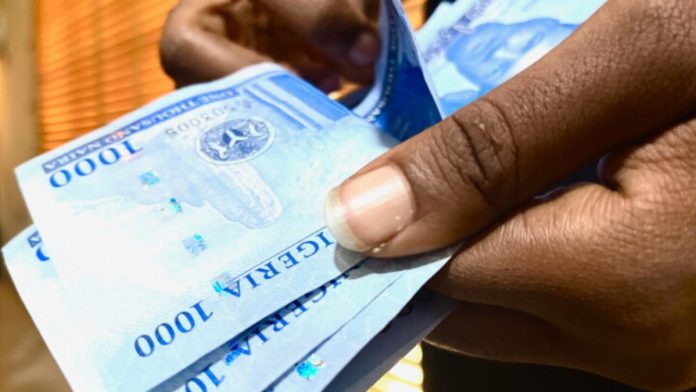Naira Rebounds despite 56% Drop in NAFEX Inflows
After more than a 56% decline in foreign currency inflows into the Nigerian Autonomous Foreign Exchange Fixing (NAFEX) market, the naira appreciated by 0.1% to N461.33 per United States (US) dollar yesterday.
Market data indicates that the local currency gain at the Investors’ and Exporters’ foreign exchange (FX) market came as demand pressures eased – albeit moderately amidst large FX losses booked by corporates in 2022, according to their separate financial statements.
Foreign currencies request for import by eligible manufacturers have been on ascendancy despite a sustained scarcity of foreign currency inflows due to the Central Bank of Nigeria’s capital control measures. This has raised FX backlog to foreign investors over the years.
Also, data from the CBN indicated that the Chinese Yuan (CNY), strengthened against the Nigerian naira as the external reserves nosedived by more than $30 million, Against Chinese local currency, the Naira depreciated by -0.6% to close at N66.7 Per Yuan.
Recall that MarketForces Africa reported earlier in the week that there were healthy foreign currency inflows into the official market last week, though external reserves position went down amidst Central Bank intervention.
FX auctions were conducted, thus reducing the liquidity level in the financial market coupled with the CBN debits on banks’ cash reserves for failing to meet lending to deposit targets.
Last week, the Nigerian Autonomous Foreign Exchange Fixing (NAFEX) rate traded within the range of N446.0-462.5 but closed at N461.8, pointing towards depreciation of -0.1% or N0.6 on a weekly comparison.
In the forwards market, Coronation Research reported that traded within the range of N461.8-478.4 per US dollar. Analysts said for a 1-month contract, the exchange rate appreciated by +3.8% to close at N467.2, and in a 3- month contract, FX appreciated by +1.1% to close at N486.1.
In the retail secondary market intervention sales (SMIS) market, the FX spot rate remained unchanged at N462. Based on channel checks, analysts noted that in the parallel market, the Naira closed at an average of N760.
As of Friday’s close, the gap between the NAFEX and parallel market rate printed at 64.6%, creating an opportunity for speculative activities in the market. Nigerian Banks Give Fresh Update on Naira Swap
According to data from FMDQ, NAFEX turnover declined by 56.1% to USD67.6 million. The NAFEX window recorded an inflow of USD205.0 million. The breakdown of sources of inflows indicated that CBN contributed 6.2%, and foreign portfolio investors accounted for 20.1% as of Friday’s close.
Meanwhile, non-bank corporates contributed the largest chunk at 36.9% while inflows from exporters accounted for 29.2%. In addition, others in the category added 7.6%.# Naira Rebounds despite 56% Drop in NAFEX Inflows












